How to Grow Crabapple |
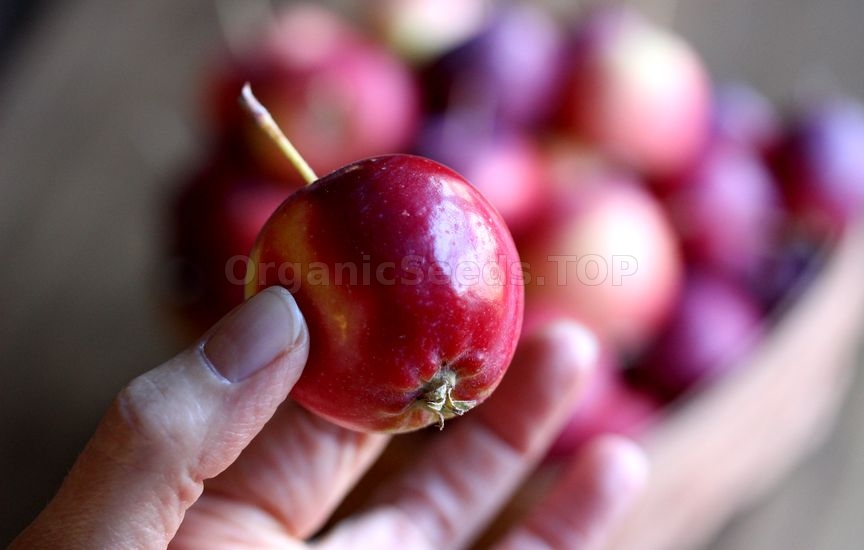 There are few plants that create greater intrigue or visual impact during all four seasons than the flowering crabapple. In the spring all eyes are enticed with delicate colors offered by emerging leaves and buds. Unopened flower buds may hint of one color and as flowers open, other hues are revealed in a spectacular floral display. As flowers fade the rich foliage offers another subtle contribution to the landscape. As autumn arrives crabapple foliage and fruit transform to match the vibrant colors of an artist's palette. Falling leaves reveal the glorious color of the fruit. The snow of winter accents fruit, branches, and tree shape. It is no wonder crabapples are called "jewels of the landscape." Flowers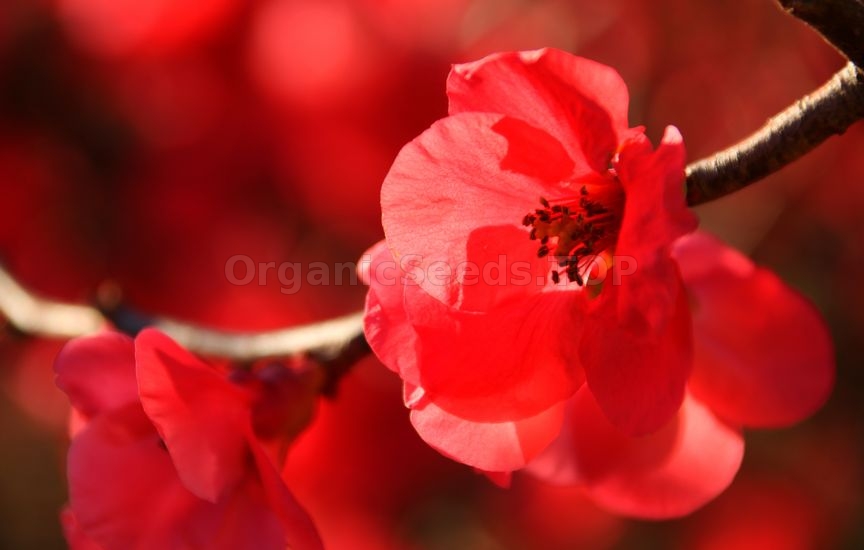 Depending on the cultivar and spring temperatures, full bloom could occur as early as late April or delay until mid-May. Flowers are classified as single (five petals), semi-double (six-ten petals), or double (more than 10 petals). Double-flowering crabapples retain their flowers longer than other types, but fruiting is usually sparse.
Blossom colors range from pearly white through delicate pinks to a deep red. There are even cultivars with coral or salmon colored flowers. Fruit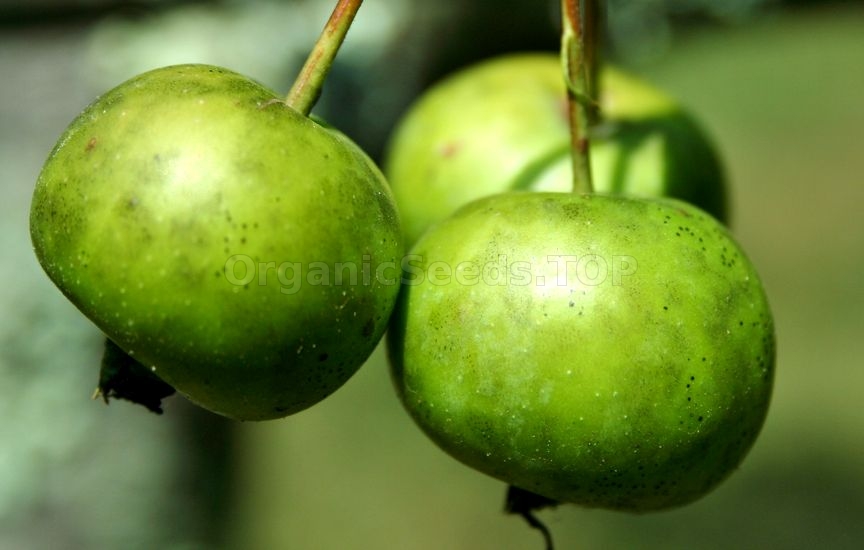 Apples and crabapples are in the rose family, Rosaceae, in the genus Malus. Crabapples are differentiated from apples based on fruit size. If fruit is two inches in diameter or less, it is termed a crabapple. If the fruit is larger than two inches, it is classified as an apple.
Fruit is borne in the summer and fall. Colors range from dark-reddish purples through the reds and oranges to golden yellow and even some green. On certain selections the fruit can remain attractive well into the late winter. The larger fruited cultivars offer a bonus because the fruit can be spiced or used in jelly. Growth Habit and Size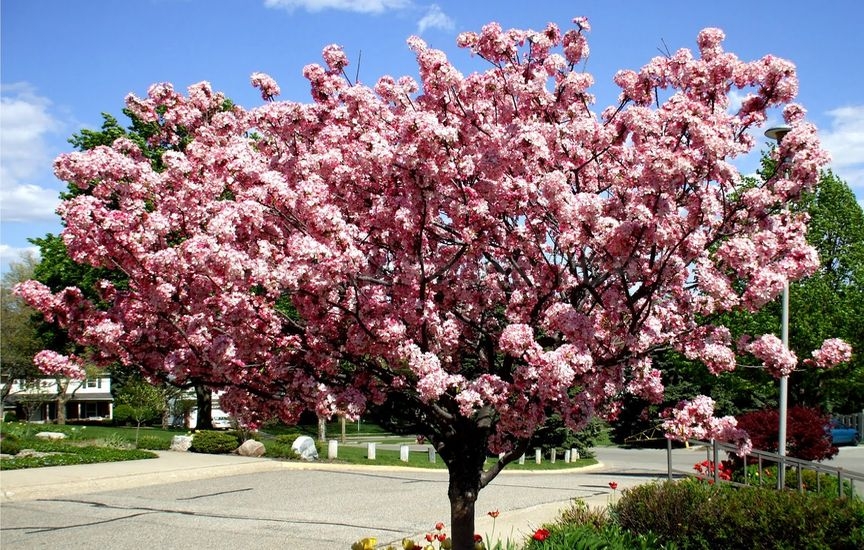 Crabapples have diverse growth habits or tree shapes. The shapes consist of weeping (pendulous), rounded, spreading (horizontal), upright (columnar), vase-shaped, and pyramidal.
Flowering crabapples vary greatly in size. At maturity, certain cultivars will only attain a height of eight feet, while others will tower to heights greater than 40 feet. However, most flowering crabapples reach mature heights of 15 to 25 feet. Due to their versatility, crabapples make excellent choices for use around homes, schools, parks, public and commercial buildings, and in highway plantings. Site Requirements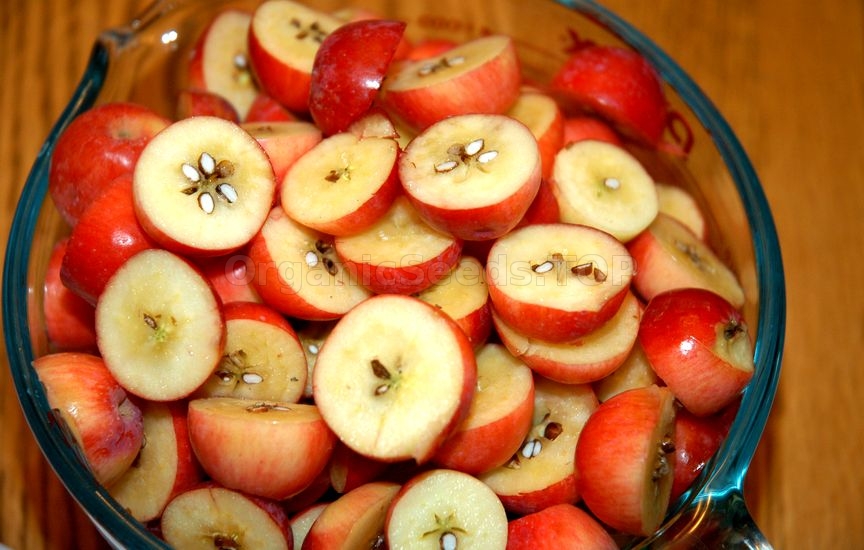 Flowering crabapples are adaptable but thrive in rich loam type soil (a combination of clay, silt, and sand). Regardless of soil type, good drainage is a must for tree health. Crabapples grow best in a moist, slightly acidic soil with a pH of 5.0 to 6.5. Excessively moist areas and low spots should be avoided. On the other hand, relatively dry sites can be tolerated by crabapples if plant stresses are minimized during the first year after transplanting.
Plant stress, evidenced as unhealthy appearance (e.g. leaf scorch, poor leaf color), is a response to unfavorable environmental conditions. Drought stress, for example, is due to a lack of water, either from rainfall or irrigation. Water is essential for every life function of the plant. 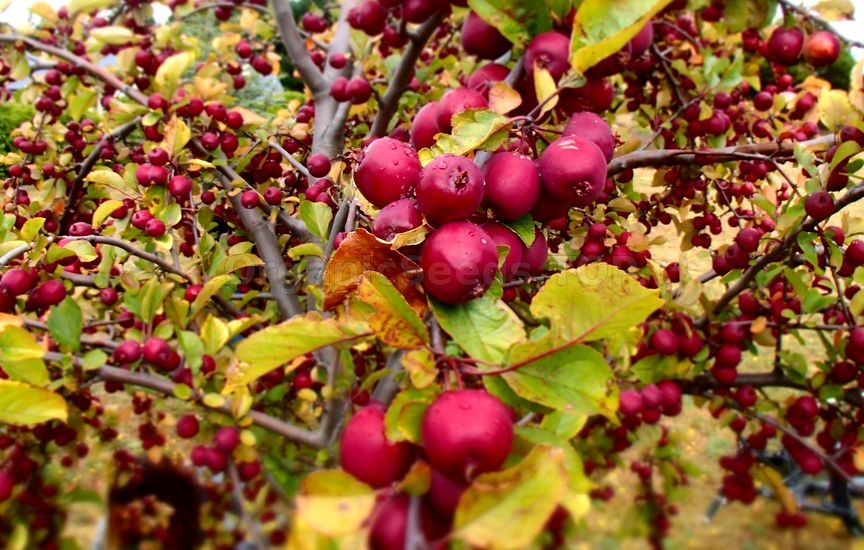 However, too much water or over-watering, a persistent saturation of the roots, can lead to root rot and eventual plant death. Other plant stresses include too much shade, insect damage, infectious diseases, and physical damage from lawnmowers, weed-eaters, animals, and children playing. Full sun exposure, 8 to 12 hours of direct sun, is required for optimal development of fruits and flowers. Most flowering crabapples are hardy and can endure the colder temperature extremes of zone 4 on the USDA Plant Hardiness Zone maps. Planting and Establishment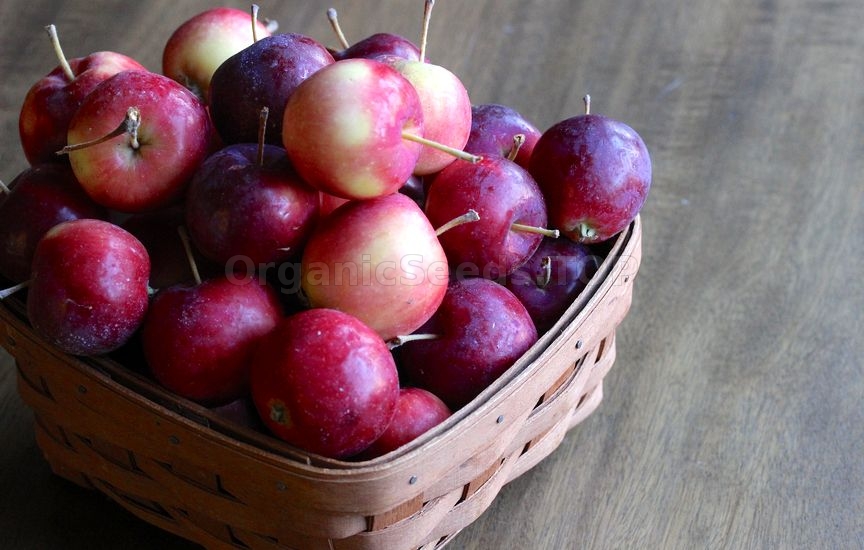 Tree health and vigor depends upon proper site selection and preparation. Before planting, have the soil tested to assure proper pH and nutrient levels. If necessary, make any adjustments to the soil before planting.
Flowering crabapples may be planted almost any time of the year. Balled and burlapped (B&B) stock and containerized trees can be planted any time after spring frosts end through fall until about three weeks before the ground freezes. However, bare root trees should only be planted in the spring. Bare root trees become too stressed if planting is delayed past early spring. Every effort should be made to keep roots or the root ball from drying out before planting. For bare root trees, the planting hole should be dug wide and deep enough to allow for the natural extension of the root system. None of the roots should be cramped or bent to fit into the hole. This can result in girdling (strangling) roots that will slowly kill the tree. Damaged roots should be pruned just above the break or damaged area prior to planting. For containerized or balled and burlapped trees, a saucer-shaped hole should be dug. The overall size should be at least two times wider than the root ball diameter. The center depth of the saucer should be the exact height of the root ball. This allows the burlap to be untied and placed down into the hole at planting. Make sure all strings holding the burlap at the base of the trunk are removed or these may damage or even kill the tree in later years. Containerized plants should be removed from the pots just prior to planting. Using a small, sharp knife slice one inch deep into the compacted root mass, from top to bottom, in at least three different areas. This will help prevent the formation of girdling roots. 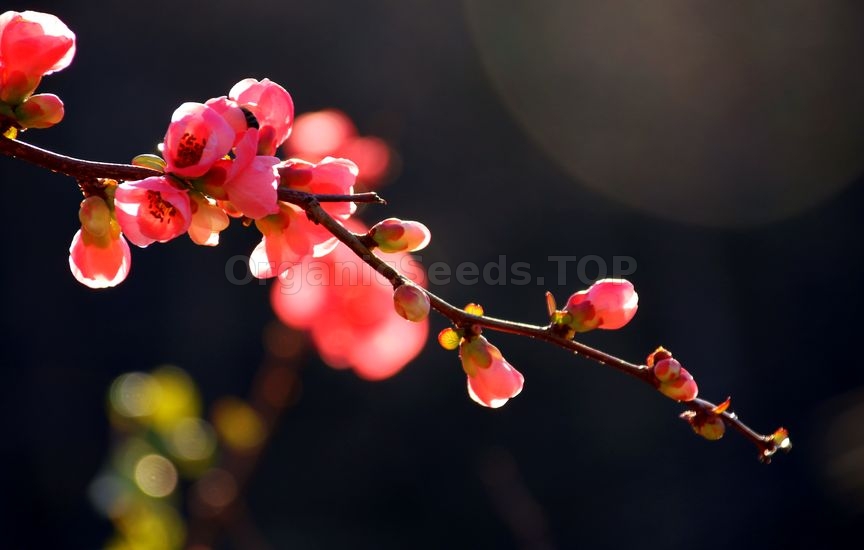 Most flowering crabapples are grafted onto other root systems (rootstocks) which must be planted at the original depth they were in the nursery or slightly higher (1-2" maximum). "Long term root decline" may occur if trees are transplanted too deep. When tree roots are buried deeper than originally grown, the tree can languish for years, resulting in lackluster appearance and health, and eventually death. Backfill the planting holes with a 50-50 mixture of the original soil and organic matter (e.g. leaf humus, compost, peat moss). Do not pack backfill around the root ball. Instead, use water to help settle the soil around the roots when the hole is three-quarters full. When the water has drained, backfill the hole completely and water again. Place a thin layer of mulch, no more than two inches deep, around the tree to help reduce water loss. Turfgrasses will compete with the young tree for water and nutrients. Keep turfgrasses away from the rooting area of the planted tree to provide optimal conditions for tree establishment and survival. The young tree will need about one inch of water, rain or otherwise, per week. These subsequent weekly waterings, during the first year, are crucial for tree establishment. Maintenance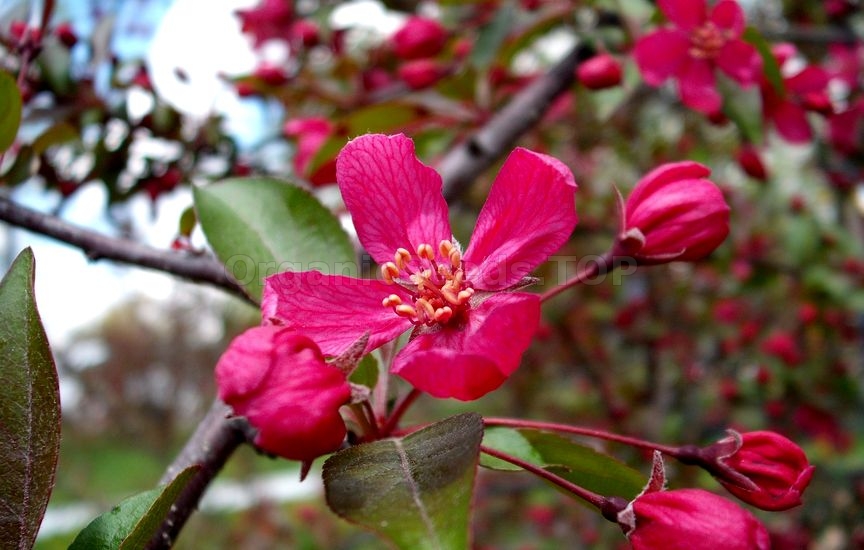 Fertilizer
When crabapples are planted in a soil of average fertility and provided moderate amounts of organic matter, they need little additional fertilizer the first year. However, if annual growth is less than five to six inches or leaves are small or pale green, then fertilizer is essential. Pruning Crabapples require little pruning. Watersprouts (rapidly growing shoots from branches), suckers (rapidly growing shoots from roots or base of tree), dead, diseased, damaged, and crossing branches should be removed. Occasionally pruning is necessary to open up the center of the plant to sunlight and air movement or to remove a wayward branch. When pruning is done it should be completed before early June. By mid-June to early July, flower buds for the next season are beginning to form in most crabapples. Pruning after July will reduce floral display and fruiting for the following year. Irrigation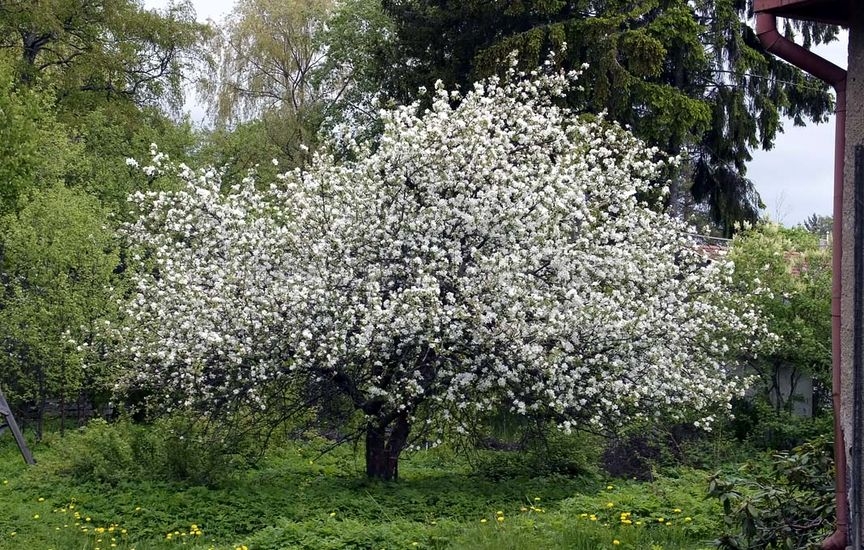 If trees are well established after the first year, little additional watering is needed unless drought conditions prevail. In a drought situation it is necessary to water thoroughly and deeply every two or three weeks. Depending on the soil type and drought severity, two to six inches of water should be applied at each watering interval. If crabapples are not watered during periods of drought they will not collapse and die. However, the trees will use most of their carbohydrates to merely exist and survive. As a result, the next year's floral and fruit display will likely be diminished. You may need:Organic European Crab Apple Seeds (Malus Sylvestris) |
|
|
